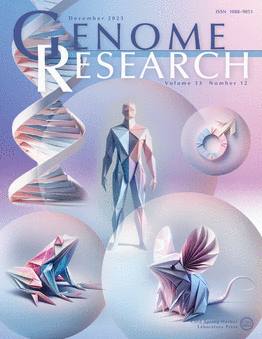果蝇的功能分析有助于分类与罕见疾病相关的不确定意义的变异
IF 5.5
2区 生物学
Q1 BIOCHEMISTRY & MOLECULAR BIOLOGY
引用次数: 0
摘要
患有罕见疾病的人往往要经历令人沮丧和昂贵的诊断过程。临床遗传学家在分析罕见疾病患者的外显子组或基因组测序数据时,经常遇到一组已知致病基因中的不确定意义变异(VUS)或不确定意义基因(GUS)中的罕见变异,即使使用最新的生物信息学工具也难以解释。在本研究中,我们回顾了果蝇黑腹果蝇的研究如何通过揭示GUS的临床相关性和将罕见变异分类为特定的等位基因类别(功能丧失或功能获得,穆勒变异)来促进罕见疾病的诊断。我们展示了果蝇研究人员如何合作研究同源果蝇基因的功能丧失,评估人类基因拯救果蝇突变表型的能力,确定过表达人类蛋白质的影响,并通过产生类似的果蝇突变体来测试感兴趣的罕见变异的功能后果,从而有助于罕见疾病的诊断。我们认为,使用果蝇获得的数据可以用来设计有效的多路分析,以分析变异效应(MAVEs),从而破译巨大的人类变异。本文章由计算机程序翻译,如有差异,请以英文原文为准。
Functional assays in Drosophila facilitate classification of variants of uncertain significance associated with rare diseases
Individuals living with rare diseases often undergo a frustrating and expensive diagnostic odyssey. Clinical geneticists who analyze exome or genome sequencing data from rare disease patients often encounter a list of variants of uncertain significance (VUS) in known disease-causing genes or rare variants in genes of uncertain significance (GUS) that are difficult to interpret, even with the integration of the latest bioinformatic tools. In this Perspective, we review how studies using the fruit fly Drosophila melanogaster have facilitated rare disease diagnosis by uncovering the clinical relevance of GUS and classifying rare variants into specific allelic categories (loss-of-function or gain-of-function, Muller's morphs). We showcase how fly researchers have been collaboratively studying the loss-of-function of orthologous fly genes, assessing the ability of the human genes to rescue the fly mutant phenotypes, determining the effect of overexpressing human proteins, and testing functional consequences of rare variants of interest by generating analogous fly mutants to contribute to rare disease diagnosis. We argue that data obtained using Drosophila can be leveraged to design effective multiplexed assays for variant effects (MAVEs) to decipher the vast human variome.
求助全文
通过发布文献求助,成功后即可免费获取论文全文。
去求助
来源期刊

Genome research
生物-生化与分子生物学
CiteScore
12.40
自引率
1.40%
发文量
140
审稿时长
6 months
期刊介绍:
Launched in 1995, Genome Research is an international, continuously published, peer-reviewed journal that focuses on research that provides novel insights into the genome biology of all organisms, including advances in genomic medicine.
Among the topics considered by the journal are genome structure and function, comparative genomics, molecular evolution, genome-scale quantitative and population genetics, proteomics, epigenomics, and systems biology. The journal also features exciting gene discoveries and reports of cutting-edge computational biology and high-throughput methodologies.
New data in these areas are published as research papers, or methods and resource reports that provide novel information on technologies or tools that will be of interest to a broad readership. Complete data sets are presented electronically on the journal''s web site where appropriate. The journal also provides Reviews, Perspectives, and Insight/Outlook articles, which present commentary on the latest advances published both here and elsewhere, placing such progress in its broader biological context.
 求助内容:
求助内容: 应助结果提醒方式:
应助结果提醒方式:


